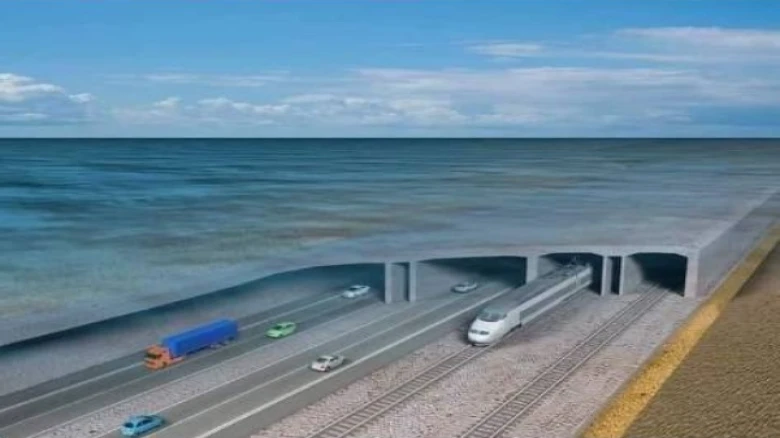Regional

The underwater tunnel system will consist of three tubes with cross tunnels connecting them...
Digital Desk: A customised Airborne Electromagnetic Survey (AEM) was carried out for the projected Three-tube-rail-cum-road tunnel through the Brahmaputra, which will connect Silghat on the South bank and Dhalaibil on the North bank, a project that could turn out to be a stunning engineering masterpiece.
According to a Border Roads Organizations (BRO) official, the AEM survey, which was carried out with the assistance of the national Geophysical research centre, was the first of its kind in the country.
"Extensive geological studies have been conducted in the project area. Boreholes up to a maximum depth of 150 metres were drilled for the first time in the Brahmputra river basin, posing challenges due to the project's proximity to the environmentally fragile Kaziranga National Park. As a result, an airborne electromagnetic survey was conducted to alleviate such obstacles and confirm the conclusions of geological studies "According to the official.
The underwater tunnel system is designed as a three-tube tunnel with cross tunnels every 500 metres. The railway and road tunnels will be 9.78 kilometres long.
The highway tubes will connect NH-715 to the south and NH-15 to the north.
"In addition to being an attempt to make history and demonstrate India's potential in underground construction technology, this underwater tunnel will be the longest underwater tunnel in India and the longest road-cum-rail tube underwater system in the world. The project's total cost is anticipated to reach Rs 9,000 crore "added the official.
The BRO suggested the underwater Brahmaputra tunnel at the military forces' request to provide safe access to Arunachal Pradesh and Assam's north bank in the case of emergency.
"During the monsoon season, the Brahmaputra River is prone to severe flooding. There are several bridge-based crossings over the huge river. These bridges are vulnerable to flooding and lack concealment. In the event of hostilities with our northern neighbour, they are likewise vulnerable to direct enemy action. As a result, there was a need for a safe crossing across the Brahmaputra, and the idea of building a tunnel beneath the river was born "He stated.
Considering national goals and the Gatishakti Vision, the tunnel project has been planned to be multimodal - a rail and road tunnel. The centre road tube will also serve as a rail safety tube.
Leave A Comment